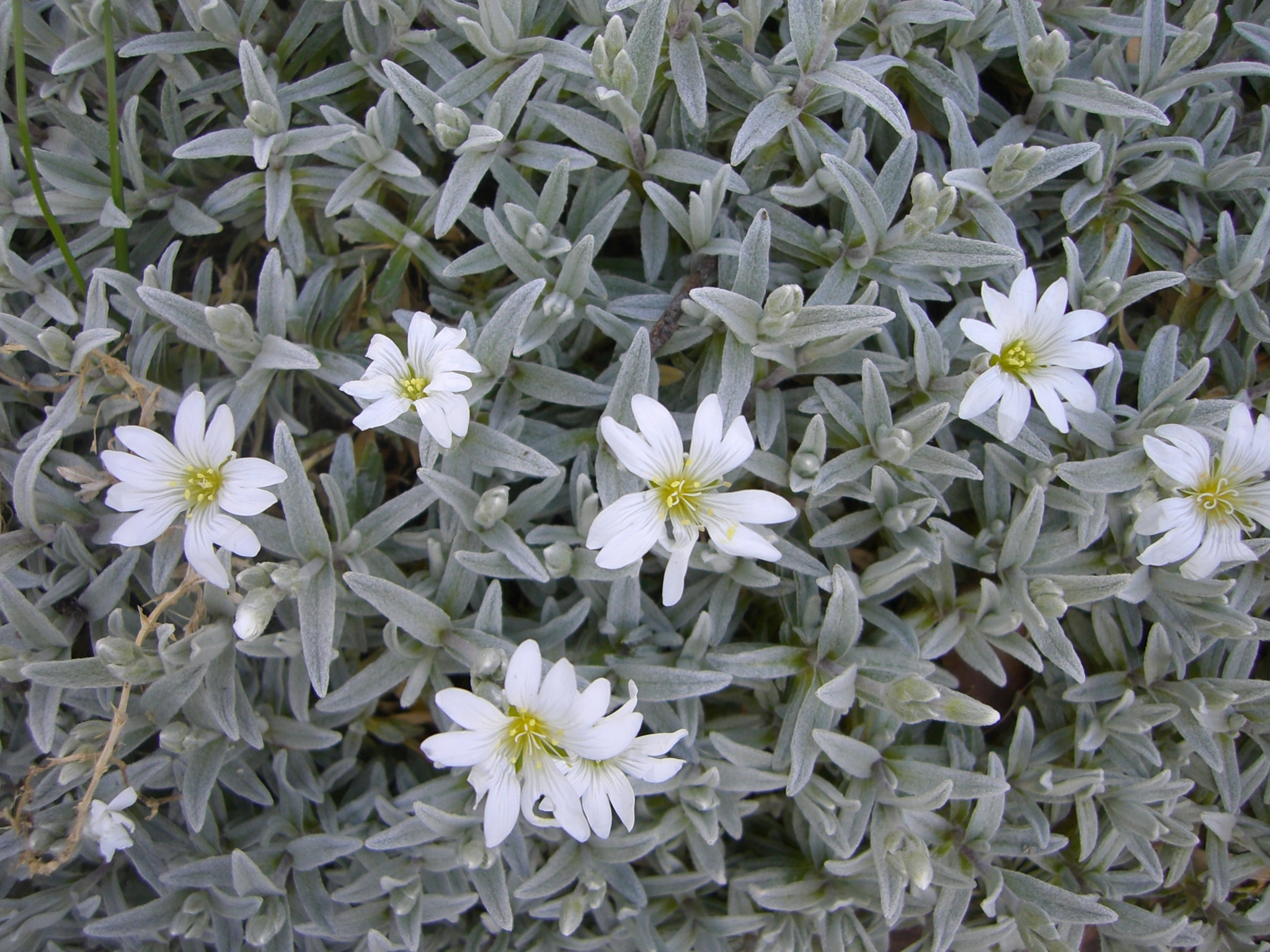
Greek keras—a horn, the seed capsules of some appearing like horns as they emerge from the calyx.
Perennial or occasionally annual herbs, rarely woody. Leaves stalkless. Flowers solitary or in clusters. Sepals usually 5, free. Petals mostly 5, white, notched or divided at the tip. Styles 5 on the same radius as the sepals. Fruit a cylindrical or curved capsule opening with 10 teeth; seeds numerous.
Grown mostly as compact edging or rockery plants.
Several species, known as Chickweeds, are naturalised, the most widespread being Mouse-ear Chickweed C. glomeratum Thuill. which is found in gardens and waste places. It has flowers in dense clusters, 10 stamens and fruit stalks about as long as the sepals.
About 100 species cosmopolitan but mostly northern temperate and arctic with the majority of species in Europe.
Nilsson (1977).
Source: (1997). Caryophyllaceae. In: . Horticultural Flora of South-eastern Australia. Volume 2. Flowering plants. Dicotyledons. Part 1. The identification of garden and cultivated plants. University of New South Wales Press.
